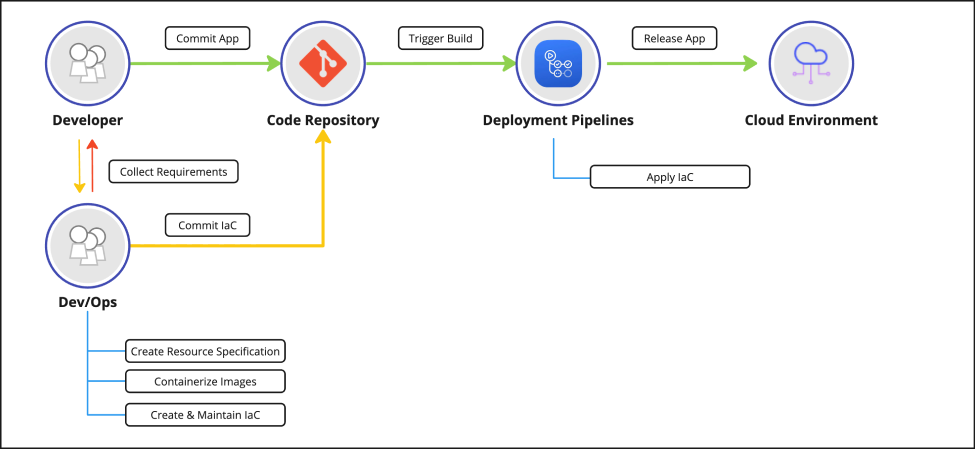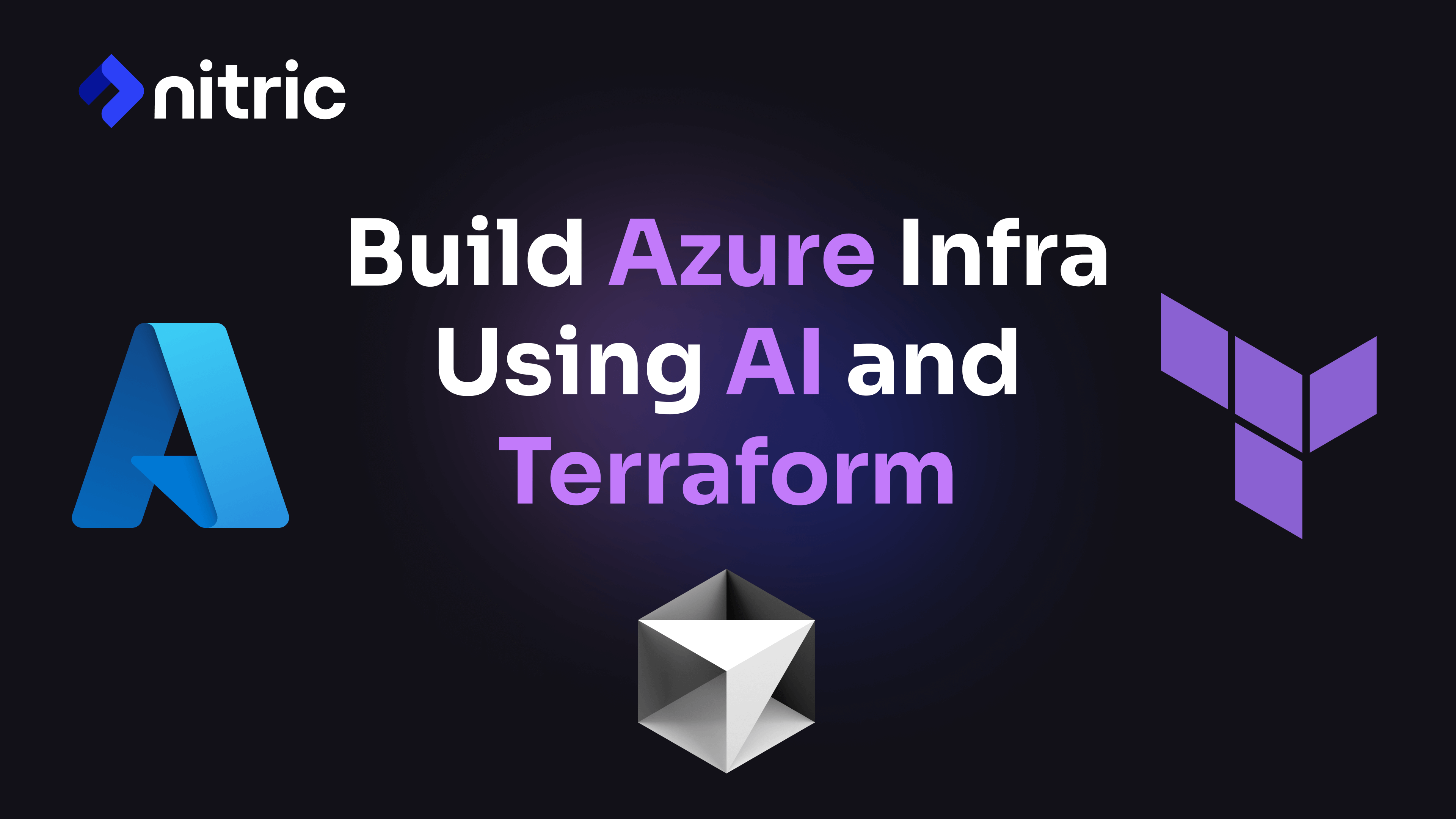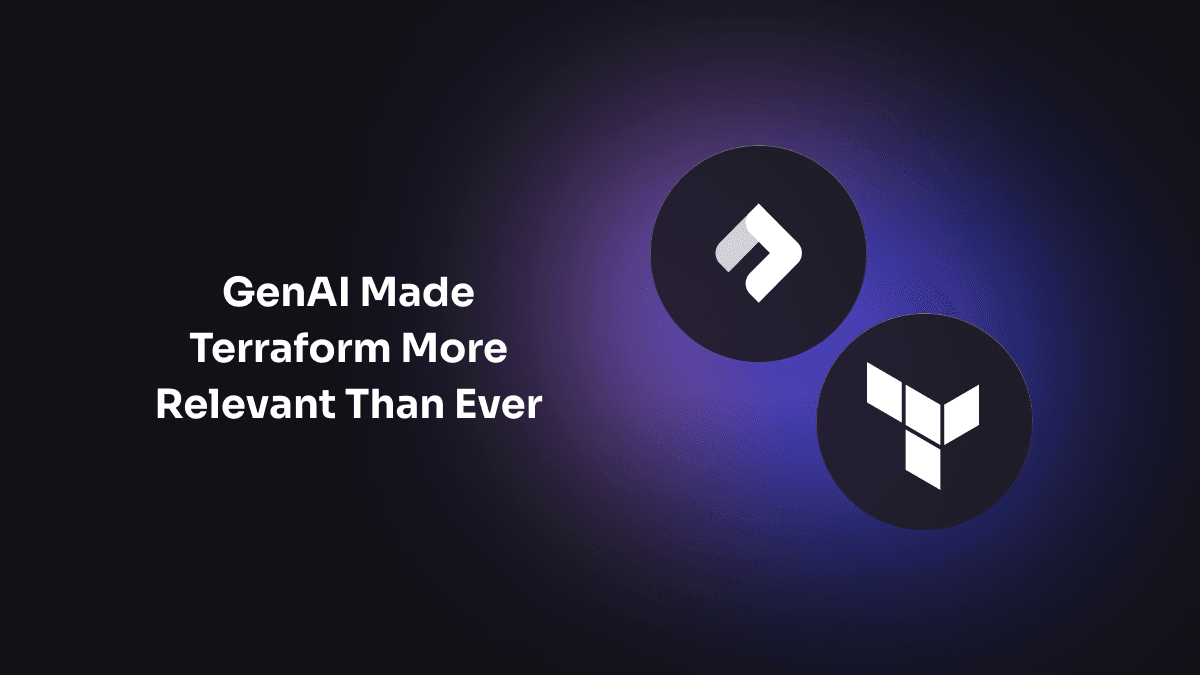Terraform modules encapsulate complex configurations into reusable, manageable components. Many teams use these modules to streamline infrastructure management, significantly boosting productivity.
By using prebuilt modules as templates, teams avoid the repetitive task of writing infrastructure code from scratch for each new project, allowing them to focus more on developing the application itself. This practice enhances consistency and reduces the likelihood of errors by reusing proven configurations across different environments.
However, many teams use Terraform modules in a way that misses their full potential and leads to maintenance challenges and inconsistencies. Let’s look at two common practices, their challenges and the changes teams can make to harness the full power of Terraform modules.
Challenges With Current Terraform Module Usage
Common Practice 1: Rigid Starter Templates
Using prebuilt templates for new projects is appealing for quick setups. Tools like Backstage offer catalogs of starter projects, providing predefined configurations that are often composed of Terraform modules. However, these templates are usually rigid, covering general use cases rather than the specific needs of evolving projects. As project requirements change, maintaining and updating these modules becomes increasingly complex. Developers must manually modify configurations, which leads to inconsistencies and versioning issues, and results in outdated or insecure setups.
Common Practice 2: Tight Coupling of Infrastructure and Application Code
Many teams have a single comprehensive Terraform project that defines the entire infrastructure setup of their application. This creates a tight coupling that leads to a complex deployment pipeline, where any infrastructure change requires a full redeployment. Such tight coupling creates dependencies that can slow down the release pipeline and make infrastructure changes difficult to manage efficiently.
The reliance on rigid templates and the tight coupling between application code and infrastructure configurations keep teams from fully leveraging Terraform modules in modern infrastructure management.
To overcome these challenges, teams should shift their perspective to build a true platform. Instead of using static code snippets and comprehensive Infrastructure as Code to manage manually, teams should focus on dynamic, reusable components. This is made feasible by introducing a framework capable of orchestrating the linkage of Terraform modules to application requirements in an automated way.
Enhancing Modularization With Infrastructure from Code
Infrastructure from Code (IfC) is a new paradigm that helps teams achieve modularization; it complements Terraform by offering an intelligent framework that automates infrastructure provisioning based on application requirements. By dynamically identifying and applying modules as needed, IfC serves as the vital link between your decoupled IaC project and your application code.
Let’s take the open source Nitric framework as an example. Instead of manually updating infrastructure, Nitric’s IfC automatically generates a requirements specification. This specification details the resources used by the application, their hierarchy and their intended runtime usage. The framework then translates this specification into plug-ins that are compatible with IaC solutions like Terraform modules, which handle the provisioning of resources, roles and permissions.
With this method, applications stay synchronized with their infrastructure, ensuring only necessary resources and permissions are provisioned.
How IfC Affects Deployment Workflows
As described above, traditional deployment workflows often involve tightly coupled application code and Infrastructure as Code projects (e.g., Terraform). The diagrams below illustrate the transformation from a traditional workflow to an IfC-enhanced deployment workflow.
Traditional Deployment Workflow

- Developer: Commits application code to the code repository. DevOps: Gathers infrastructure requirements, communicates them and commits the necessary Terraform configurations to the same repository.
- Deployment pipelines: Triggered by the code commit, the pipeline includes actions such as application unit tests, static script analysis, security scans and finally provisioning with Terraform.
- Cloud environment: The application and its infrastructure are deployed to the cloud environment.
This approach has several challenges:
-
Manual coordination: Developers and operations teams must manually coordinate infrastructure requirements and updates.
-
Brittle, tight coupling: Changes in infrastructure needs necessitate manual updates to the Terraform project, slowing down the release pipeline.
-
Complexity: The deployment process is more complex and prone to errors due to manual steps and dependencies.
By adding IfC to the deployment workflow, teams streamline and automate their process.
IfC-Enhanced Deployment Workflow

-
Nitric server: Automates the creation of resource specifications, containerizes images and generates deployment scripts using Terraform IaC modules to produce a Terraform project that is ready for deployment.
-
Developer: Commits application code to the code repository, leveraging resources from the Nitric SDK. Each resource in the SDK has a corresponding IaC module maintained by the DevOps team.
-
Cloud environment: The final deployment to the cloud environment is achieved with a streamlined pipeline.
DevOps Workflow

DevOps can work in parallel rather than as a blocker to the above flow. Teams are freed from the workflow of a single application and are able to focus on platform specific activities such as building and maintaining IaC modules (Terraform, in most cases), which adhere to the governance standards of their organization.
This approach offers several benefits:
- Automation: IfC automates the process of gathering infrastructure requirements from application code and dynamically applies the necessary Terraform modules.
- Decoupling: The application code and infrastructure are decoupled, allowing for independent updates and faster releases.
- Efficiency: The deployment pipeline is simplified, reducing errors and enabling quicker, more reliable deployments.
- Scalability: Multiple projects can use the same set of prebuilt modules, promoting consistency and reducing duplication of effort.
Build a Flexible and Consistent Platform
Terraform modules have transformed infrastructure management by enabling reusability and consistency. However, the reliance on rigid templates and the tight coupling between application code and infrastructure configurations present significant challenges.
IfC frameworks transform platform engineering by automating infrastructure provisioning based on application requirements, fostering better resource management and improving the efficiency and scalability of deployment pipelines.
I encourage you to explore this approach to see how it can reduce manual coordination, minimize errors and accelerate release cycles — ultimately bridging the gap between development and operations, and empowering teams to focus more on innovation and application development. Embrace Infrastructure from Code (IfC) to transform your Terraform practices and unlock the full potential of your platform.
This article was originally published on The New Stack.
Checkout the latest posts

Why I joined Nitric
Why I left the corporate world to join Nitric

Build Azure Infrastructure Using AI and Terraform
Learn how to leverage AI and Terraform to build and deploy Azure infrastructure directly from your application code with Nitric.

GenAI Made Terraform More Relevant Than Ever
Infrastructure as Code is more alive than ever, but it is no longer something teams should write line by line.
Get the most out of Nitric
Ship your first app faster with Next-gen infrastructure automation

